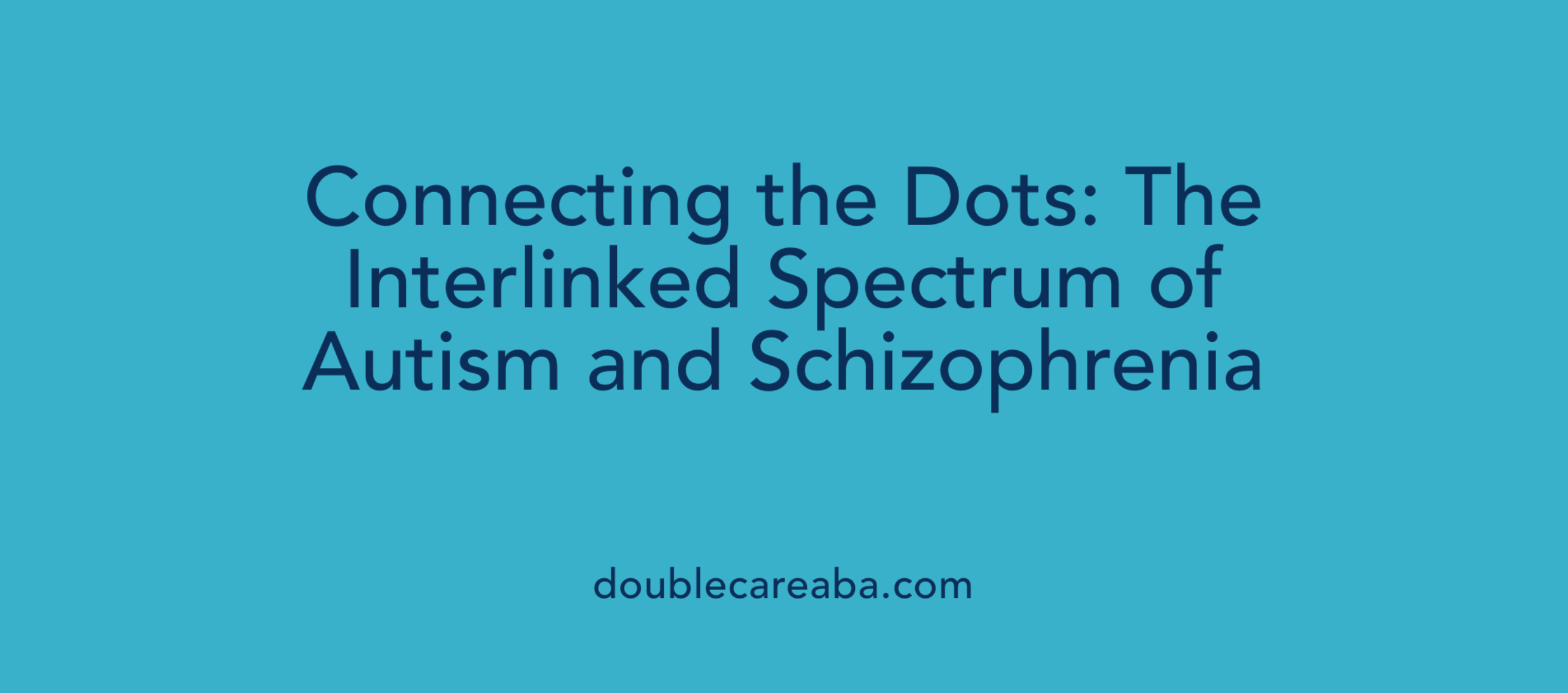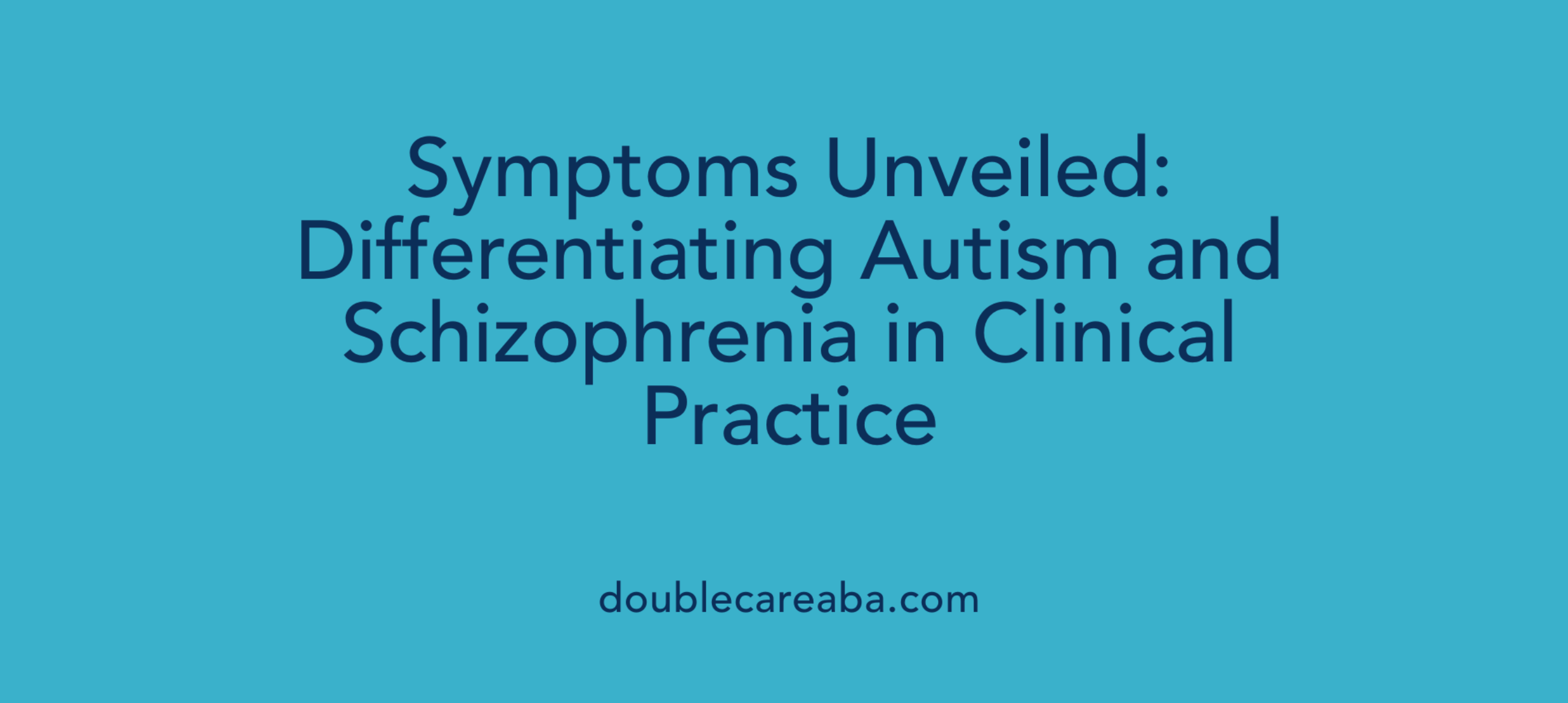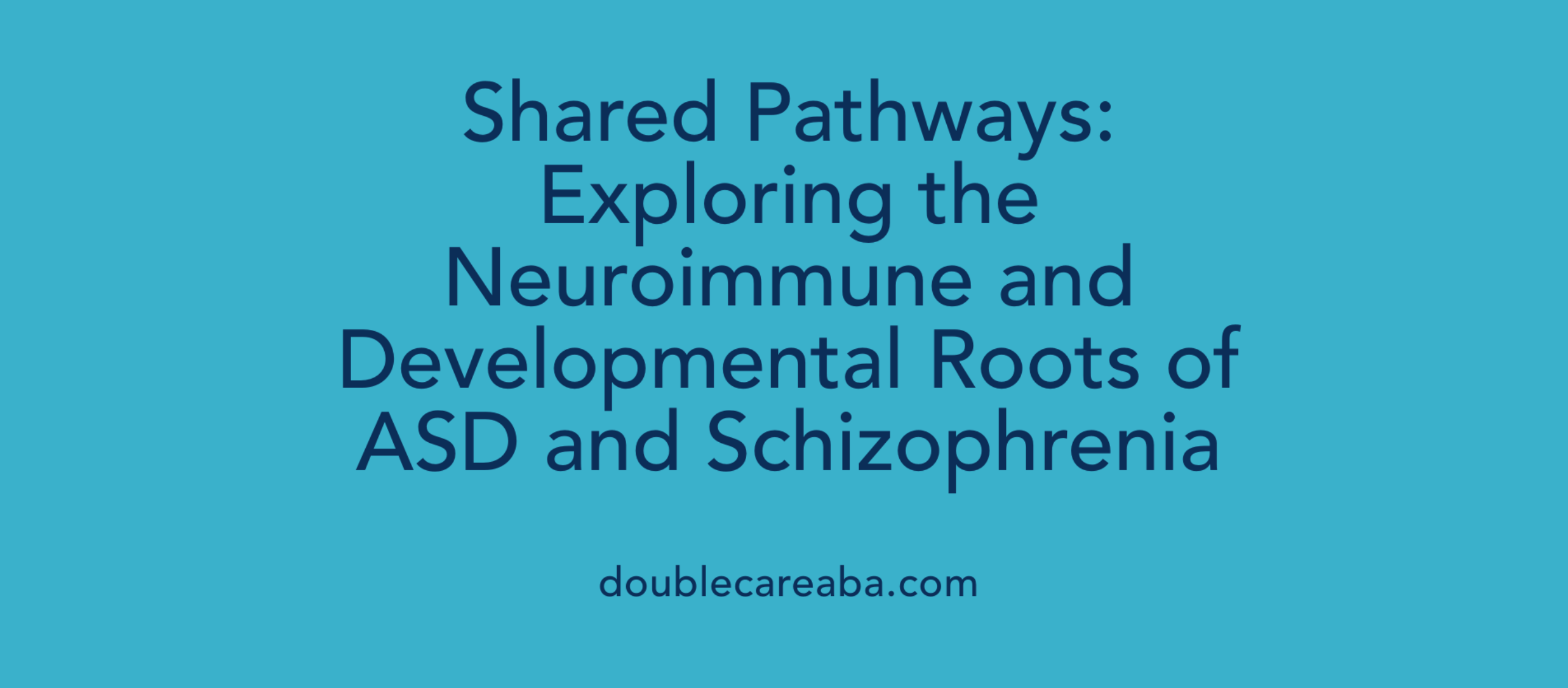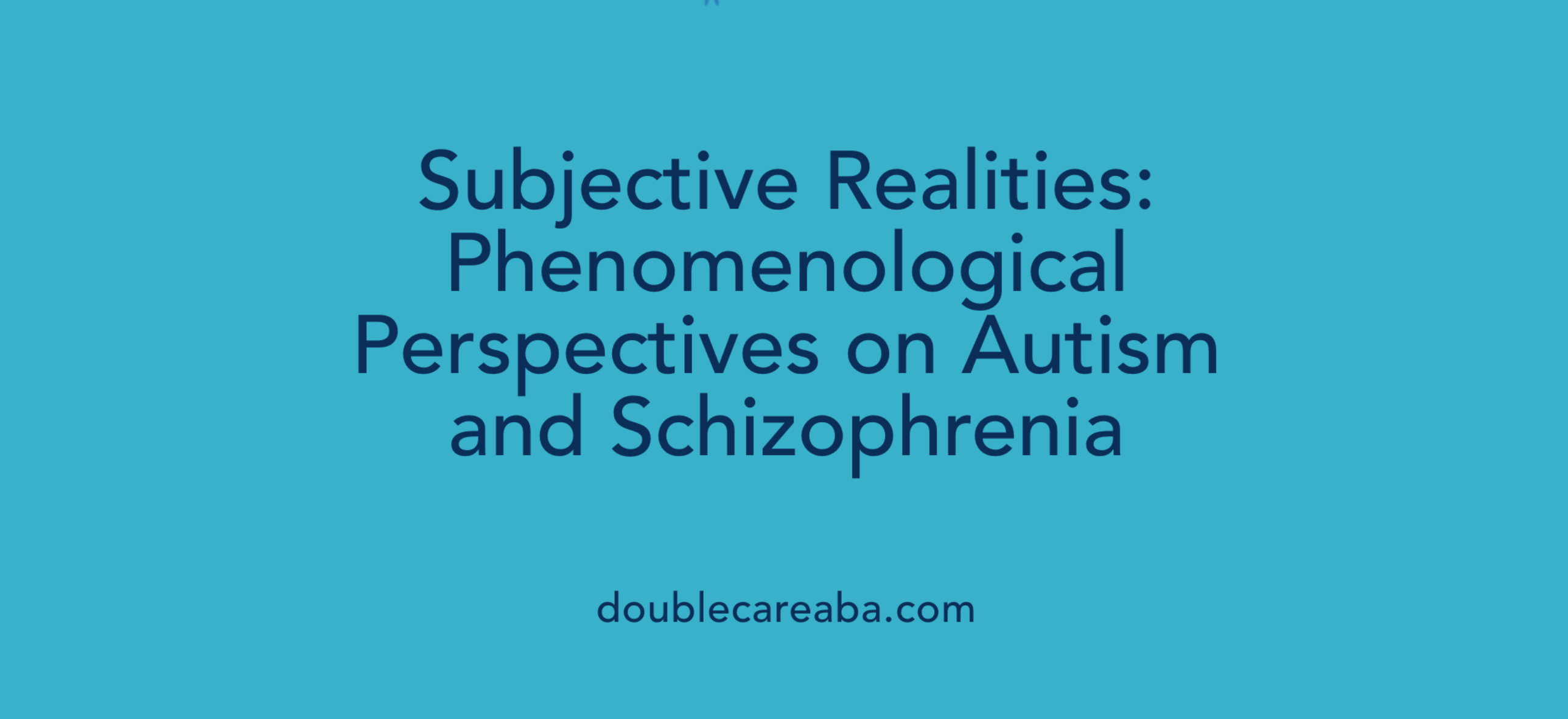Understanding the Nexus of Autism Spectrum Disorder and Schizophrenia
Autism Spectrum Disorder (ASD) and Schizophrenia are two prominent neurodevelopmental conditions with complex interrelations. While historically viewed as separate entities, recent research highlights overlapping genetic, neurobiological, and phenotypic features, prompting a reevaluation of their connections. This article explores the shared mechanisms, differential diagnoses, and emerging insights into the intertwined trajectories of these disorders, emphasizing the importance of nuanced understanding for better diagnosis and treatment.
The Relationship Between Autism Spectrum Disorder and Schizophrenia

What is the relationship between autism spectrum disorder and schizophrenia?
Autism spectrum disorder (ASD) and schizophrenia are separate but interconnected neurodevelopmental conditions. They share a number of genetic, neurobiological, and clinical features, which suggest they exist on a spectrum of brain development abnormalities. Both disorders involve disruptions in self-awareness, social cognition, and sensory processing.
From a neurobiological perspective, they show common patterns such as altered gray and white matter volumes, neural circuit dysregulation, and imbalances in excitatory and inhibitory neurotransmission. Specific genetic markers, like mutations in synaptic proteins and chromosomal deletions such as 22q11.2, are implicated in both conditions, hinting at shared genetic liability.
Epidemi psychologistsData indicate that individuals with ASD are significantly two to six times more likely to develop schizophrenia later in life than neurotypical peers. Large population studies find that about 7.8% of autistic adults also have a schizophrenia spectrum disorder, with the association being stronger in males and across different age groups.
In terms of development, ASD generally manifests early, with signs apparent in infancy, affecting social interaction and communication. Schizophrenia, however, usually emerges in late adolescence or early adulthood, characterized chiefly by hallucinations, delusions, and cognitive disturbances.
The overlap extends to shared neurodevelopmental pathways influenced by prenatal factors such as maternal infection and inflammation, which increase risk for both disorders. Genetic studies suggest that a significant number of risk genes are common, with overlaps of approximately 75% in gene expression and mutation patterns. These shared pathways may involve dysregulation of synaptogenesis, neuroinflammation, and brain circuit pruning.
Overall, research supports a model where ASD and schizophrenia are linked through overlapping biological mechanisms. This overlap underscores the importance of early recognition and intervention to improve long-term outcomes for individuals affected by either or both conditions.
Overlap in genetic, neurobiological, and clinical features
AspectAutism Spectrum Disorder (ASD)Schizophrenia (SCZ)Overlap and Shared FeaturesGenetic factorsMutations in synaptic proteins, CNVs like 22q11.2Polygenic, mutations in RELN, DISC1, and othersShared genetic loci, high heritability (~80%)Brain structureSubtle overgrowth, abnormal white matterReduced cortical thickness, gray matter lossOverlapping neuroanatomical deficits in social brain regionsNeurochemicalImbalance in GABAergic and glutamatergic systemsSimilar neurotransmitter disruptionsExcitatory/inhibitory balance disturbancesSymptomsSocial communication deficits, restricted interestsHallucinations, delusions, social withdrawalOverlap in social deficits and sensory processing issuesDevelopmental timelineEarly onset during childhoodLate adolescence or early adulthoodSimilar neurodevelopmental disruptions
Developmental and neurobiological pathways
Both ASD and schizophrenia relate to early developmental disturbances. Prenatal influences, including maternal immune activation and inflammation, have been linked to increased risks of both conditions. Elevated cytokines, such as IL-6 and TNF-α during pregnancy, correlate with altered brain development and heightened vulnerability.
Neuroimaging studies reveal that both disorders involve abnormalities in key brain circuits related to social cognition, such as the limbic system, basal ganglia, and prefrontal cortex. These alterations affect how individuals process social cues, predict outcomes, and filter sensory information.
From a neurocomputational perspective, abnormalities in brain oscillations and predictive coding might underlie some shared cognitive deficits. Both disorders tend to exhibit dysrhythmic neural activity, which impacts perception, self-awareness, and mentalizing.
Shared biomarkers and genetic markers
Despite extensive research, no definitive peripheral blood biomarkers for differentiation currently exist. However, genetic studies strongly suggest overlapping pathways. Approximately 75% of the genes identified in GWAS studies for ASD are also associated with schizophrenia.
Notable candidate genes involved in neural signaling, synaptic formation, and plasticity include CACNA1C, TCF4, and SHANK3. Copy number variations (CNVs) like deletions in 22q11.2 are common risk factors for both conditions.
Research into brain tissues and induced pluripotent stem cell (iPSC) models has demonstrated converging abnormalities such as disrupted synaptogenesis, altered excitatory/inhibitory balance, and neuroinflammatory processes, further reinforcing the biological linkage.
This growing understanding of genetic and neurobiological overlaps holds promise for more targeted therapeutic strategies, potentially addressing common pathways to improve outcomes across the spectrum.
FeaturesGenetic MarkersNeurobiological EvidenceClinical ObservationsShared risk factorsCNVs, SNPs on chromosomes 15, 16, 22Abnormalities in neural circuits, neuroinflammationIncreased co-occurrence, overlapping symptomsPathophysiological mechanismsDysregulation of calcium signaling, synaptic plasticityDisrupted brain oscillations, E/I imbalanceSimilar developmental trajectories and comorbiditiesResearch focusGWAS, iPSC, neuroimagingBrain volume, circuitry, neurotransmitter studiesDiagnostic challenges, early interventions
This comprehensive understanding underscores the complex, intertwined nature of ASD and schizophrenia. Their shared genetic and neurodevelopmental roots shed light on potential common targets for future research and treatment, ultimately aiming to improve care and prognosis for affected individuals.
Clinical Features and Symptomatology of ASD and Schizophrenia

What are the similarities and differences in symptoms, diagnosis, and clinical features of autism spectrum disorder and schizophrenia?
Autism spectrum disorder (ASD) and schizophrenia (SCZ) are both complex neurodevelopmental conditions with overlapping clinical features, but they have distinct patterns in onset, symptomatology, and progression. ASD typically appears in early childhood, characterized by restricted interests, repetitive behaviors, and significant challenges in social communication. These features tend to remain relatively stable over the lifespan, reflecting its developmental nature.
In contrast, schizophrenia usually manifests during late adolescence or early adulthood with hallmark symptoms such as hallucinations, delusions, disorganized speech, and cognitive impairments. The course of SCZ often involves episodic exacerbations with periods of worsening and remission, generally leading to long-term functional decline. Both disorders involve impairments in social cognition, making social withdrawal and communication deficits common to both, though the underlying causes differ.
Research indicates substantial genetic and neurobiological overlaps. Abnormal brain connectivity, neuroinflammation, and biomarkers like microglial activation are observed in both, but specific neuroimaging patterns—such as subtle brain overgrowth in ASD versus cortical thinning in SCZ—help distinguish them.
Diagnosis separates these disorders based on core symptoms: ASD diagnosis hinges on persistent developmental challenges in social communication and repetitive behaviors, with onset in early childhood. SCZ diagnosis demands evidence of psychosis—such as hallucinations and delusions—lasting at least one month, with the full disorder often requiring symptoms to persist for six months or more. The neurocognitive impairments and behavioral patterns further differentiate them.
Despite clear distinctions, the significant overlap complicates clinical assessment. Notably, individuals with ASD are at a three to six times higher risk of developing schizophrenia compared to neurotypical peers. This comorbidity emphasizes the importance of careful, nuanced evaluations, especially considering that early signs in ASD may resemble prodromal symptoms of psychosis. Understanding these overlaps enables clinicians to better identify at-risk populations, tailor interventions, and improve long-term outcomes.
Shared features and overlapping symptomatology
Several symptoms appear in both conditions, including social withdrawal, flattened affect, communication difficulties, and unusual behaviors. For example, both may exhibit poor eye contact and challenges in emotional expression. Sensory sensitivities, such as hyper- or hyposensitivity, are common in ASD and increasingly recognized in SCZ, often complicating differential diagnosis.
Neuroimaging studies reveal overlapping reductions in gray matter volume in brain areas involved in social cognition, reinforcing shared neurobiological roots. Behavioral assessments, eye-tracking, and electrophysiological measures often show similar deficits in social perception and executive functioning, although the underlying mechanisms differ.
Differential symptomatology and diagnosis challenges
While overlapping features exist, distinctions remain. In ASD, behaviors like repetitive actions and early developmental delays are central, beginning in infancy. In SCZ, psychotic features such as hallucinations and delusions are prominent and usually develop in late adolescence.
Differentiating between the two can be challenging, especially when ASD individuals display psychotic-like symptoms. For example, hallucination-like sensory experiences are commonly reported in ASD without meeting criteria for psychosis, whereas in SCZ, hallucinations are often more persistent and distressing. Also, some ASD traits, such as intense special interests, could be mistaken for paranoid delusions or obsessions.
This symptom overlap demands comprehensive assessments, including developmental history, clinical interviews, and neuropsychological testing. Emerging neuro-imaging and biomarker research continue to refine diagnostic tools, aiming for more precise differentiation and identification of individuals at risk of developing comorbid conditions.
Challenges in diagnosis due to symptom overlap
The overlapping symptoms pose significant challenges for clinicians. ASD and schizophrenia are often misdiagnosed or the distinction blurred, particularly in adolescents or adults presenting with complex symptoms. For example, autistic features like social withdrawal and communication deficits may be mistaken for negative symptoms of SCZ.
Additionally, some behaviors characteristic of ASD, such as creating imaginary worlds or engaging in inner conversations, can sometimes resemble hallucinations or delusional thinking, though they are based on different underlying processes. Sensory hyper- or hyposensitivity, common in ASD, might be misinterpreted as hallucinations in SCZ.
Furthermore, the presence of comorbidities, such as anxiety or ADHD, complicates diagnosis, as overlapping traits influence assessment outcomes. Accurate diagnosis often relies on multidisciplinary evaluations that consider developmental history, symptom chronology, and biological markers.
Ultimately, recognizing the shared and distinct features of ASD and schizophrenia enhances early detection, facilitates targeted interventions, and improves prognosis for individuals affected by these challenging disorders.
Genetic and Neurobiological Overlaps

Are there shared neurobiological or genetic markers linking autism and schizophrenia?
Research indicates significant commonalities in the genetic and neurobiological profiles of autism spectrum disorder (ASD) and schizophrenia (SCZ). Both conditions are highly heritable, with estimates around 80%, and share numerous genetic risk factors. For instance, alterations in specific chromosomal regions such as 16p11.2 duplication and 22q11.2 deletion are notable examples associated with increased vulnerability to both disorders.
Many genes implicated in ASD are also linked to SCZ. About 75% of genes associated with autism, identified through genome-wide association studies (GWAS), overlap with those linked to schizophrenia. Genes like CACNA1C, TCF4, and GRIN2A, which play roles in synaptic development and neurotransmitter regulation, are recurrently involved in the pathogenesis of both disorders.
Molecular pathways influencing these overlaps include disruptions in calcium signaling, synaptogenesis, and neural plasticity, with the mTOR signaling pathway emerging as a convergent factor. Variations affecting glutamatergic and GABAergic systems, essential for excitatory/inhibitory balance, are commonly observed in both ASD and SCZ.
Neuroimaging studies reveal overlapping structural and functional brain alterations. Both disorders are characterized by reductions in gray matter volume, particularly in regions involved in social cognition, language, and executive functioning such as the prefrontal cortex, temporal lobes, and hippocampus. Additionally, abnormalities in white matter integrity and disrupted neural connectivity patterns are evident, indicating shared developmental disruptions.
Biomarker research identifies neuroinflammation as a common feature. Elevated markers of microglial activation and immune responses have been observed in individuals with either condition, suggesting immune involvement in their shared neurodevelopmental pathways.
Gene expression analyses further support these overlaps, showing high expression levels of shared genes in key brain areas governing cognition and social behaviors. These include the cerebellum, cortex, basal ganglia, and limbic regions.
Overall, the convergence of genetic and neurobiological factors in ASD and schizophrenia underscores their complex interrelationship. While they display distinct phenotypic profiles—autism primarily affecting social and interpersonal functioning and schizophrenia involving psychosis and disordered perception—their overlapping markers highlight a shared neurodevelopmental origin, shaped by both genetic predispositions and environmental influences.
AspectKey FeaturesAdditional NotesShared GenesCACNA1C, TCF4, GRIN2A, 16p11.2, 22q11.2Around 75% gene overlap; influence neural signaling and synaptic developmentMolecular PathwaysCalcium signaling, mTOR pathway, Glutamatergic and GABAergic systemsCritical for neural connectivity and plasticityBrain StructureReduced gray matter, altered white matter, disrupted connectivityAffects social cognition and executive functionNeuroinflammationMicroglial activation, immune markersPossible shared immune-mediated neurodevelopmental mechanismsGene ExpressionHigh in cerebellum, cortex, hippocampusReflects involvement in cognitive and social processing
These overlapping features suggest a complex, multifaceted relationship between autism and schizophrenia, offering avenues for integrated diagnostic and therapeutic strategies. However, despite these commonalities, each disorder maintains unique aspects that are crucial for accurate diagnosis and targeted treatment.
Pathogenetic Mechanisms and Developmental Factors

What are the shared pathogenesis, neuroimmune mechanisms, and developmental factors involved in autism spectrum disorder and schizophrenia?
Autism spectrum disorder (ASD) and schizophrenia are both neurodevelopmental conditions that emerge from complex interactions between genetic and environmental influences. A central theme linking these disorders is their shared neuroimmune mechanisms, particularly the role of prenatal immune activation.
Research shows that prenatal exposure to infections can activate maternal immune responses, leading to increased levels of cytokines such as IL-6, IL-8, and TNF-α. These inflammatory signals can cross the placental barrier and influence fetal brain development.
In the developing fetus, these maternal cytokines impact critical processes such as neuronal migration, differentiation, and synaptic pruning. Disruptions in these processes may result in altered neural circuitry that underpins social cognition, perception, and behavior.
Evidence indicates that microglial activation—microglia are brain-resident immune cells—is elevated in both ASD and schizophrenia. In autism, microglial activation often persists as chronic neuroinflammation, contributing to abnormal synaptic connectivity and brain overgrowth or hyperexcitability. For example, studies highlight increased microglial density and activation in the brains of individuals with ASD.
In schizophrenia, neuroinflammatory markers may be more subtle or episodic, often becoming apparent during psychotic episodes or stress-related periods. Nevertheless, the underlying immune dysregulation—such as abnormal cytokine profiles and microglial response—is a common thread.
Genetic studies reinforce the immune connection, with common gene variants implicated in both disorders. Many of these concern the major histocompatibility complex (MHC), which is integral to immune response regulation. Variants in immune-related genes suggest that genetic predisposition influences susceptibility to immune-mediated neurodevelopmental disruptions.
The developmental timing is also crucial. Because these immune influences occur during critical periods of brain growth—particularly in utero and early childhood—they can set trajectories that increase vulnerability to ASD and schizophrenia later in life. The precise windows and severity of immune activation influence the manifestation and course of each disorder.
In summary, both ASD and schizophrenia may arise from early immune challenges that disrupt typical neurodevelopment. These shared mechanisms involve maternal immune activation, chronic microglial activation, and genetic susceptibilities, all acting within sensitive periods of brain development to shape the clinical profiles observed in these conditions.
Phenomenological and Conceptual Frameworks
How do phenomenological and conceptual frameworks compare when analyzing autism spectrum disorder and schizophrenia?
Phenomenologically, autism spectrum disorder (ASD) presents as a condition characterized by stable perceptions of lived space and a relatively intact pre-reflective sense of self. Individuals with ASD primarily experience challenges in social interactions and understanding social cues, but their fundamental sense of being a coherent self remains largely preserved. Their perceptual and sensory experiences tend to be consistent, although sensory sensitivities are common. This stability in self-awareness and perception indicates that ASD affects social and intersubjective domains without significantly disrupting the basic structure of self-experience.
In contrast, schizophrenia involves a significant disintegration of the relationship with the world around the individual. Phenomenologically, it is marked by a fragmented sense of self, disorganized perceptions, and disturbances in space and time perception. The experience of flow with the world is often disrupted, accompanied by hallucinations and delusions that distort perceived reality. Patients often report a disembodied or disembodied sense of being, reflecting profound disturbances in the minimal self—the pre-reflective, embodied aspect of self-awareness.
Conceptually, both disorders are viewed as neurodevelopmental conditions with overlapping cognitive and social impairments. However, schizophrenia is distinguished by profound disturbances in self-awareness and perceptual reality, making it more of a disorder of the minimal self—an experience of disembodiment and disconnection from the world. ASD, on the other hand, involves difficulties in social communication and understanding others' perspectives, but the sense of self as a coherent entity remains stable.
Phenomenological frameworks emphasize the lived subjective experience, highlighting how individuals with schizophrenia experience a collapse or fragmentation of self and world. In contrast, ASD's phenomenology suggests a stable self-perception but impaired social intersubjectivity, leading to difficulties in understanding others and engaging in typical social behaviors.
Neuropsychological research supports some overlap, as both groups may exhibit specific processing deficits. High-functioning individuals with ASD and those with schizophrenia can show overlapping patterns in cognitive tasks, such as impairments in executive functioning and social cognition.
In summary, phenomenological and conceptual analyses illustrate that schizophrenia involves fundamental disintegration of self and world—sometimes described as a disorder of the minimal self—whereas ASD primarily affects social and interpersonal self-structures within a relatively stable experiential framework. Understanding these differences helps tailor therapeutic approaches and deepens insights into the nature of each condition.
Neurocomputational Models and Brain Oscillations
What are the neurobiological models, such as predictive coding and brain oscillations, used to understand autism and schizophrenia?
Neurobiological frameworks like predictive coding are central to understanding how autism spectrum disorder (ASD) and schizophrenia (SCZ) affect perception and cognition. Predictive coding describes how the brain constantly generates models of the environment, updating them based on sensory information and prediction errors. In both conditions, disruptions in these hierarchical processes lead to abnormal perceptual inference.
In autism, these models suggest an overweighting of prediction errors, causing individuals to be overly sensitive to sensory inputs, leading to sensory overload and difficulties in social interactions. Conversely, in schizophrenia, the system tends to overestimate the precision of internal predictions, which can result in hallucinations and delusional beliefs due to false perception of reality.
Brain oscillations—rhythmic patterns of neural activity—are also crucial for understanding these disorders. Studies show abnormalities in spectral profiles, particularly in gamma (roughly 30–80 Hz) and theta (4–8 Hz) bands, which are associated with cognitive functions such as attention, language, and social cognition.
How are brain oscillation abnormalities relevant to ASD and SCZ?
Oscillatory disruptions in ASD and SCZ reflect underlying neural communication issues. In autism, hyper-synchronization of brain rhythms can lead to excessive sensory responsiveness and challenges in social cognition. This hyperconnectivity often manifests as rigid, repetitive behaviors and sensory hyper-reactivity.
In schizophrenia, however, abnormalities such as reduced gamma oscillations are prevalent, impacting processes like working memory, perceptual organization, and thought coherence. Dysregulation of theta rhythms correlates with impairments in language processing and executive functions. These oscillatory deficits contribute to core symptoms like hallucinations, disorganized thinking, and social withdrawal.
What is the significance of spectral and rhythmic disruptions?
Spectral disruptions refer to alterations in the power and coherence of specific frequency bands, influencing how different brain regions communicate. Rhythmic abnormalities, or oscillopathies, impact the synchrony necessary for neural network integration. Both ASD and SCZ exhibit spectral imbalances that disturb the excitatory/inhibitory (E/I) balance, critical for normal brain function.
Observing these disruptions through EEG and MEG studies supports the idea that abnormal oscillations are biomarkers for these disorders. For example, excessive gamma activity in autism can relate to sensory hypersensitivity, while reduced gamma coherence in schizophrenia correlates with cognitive deficits.
How do these models help understand and treat symptoms?
By integrating predictive coding and oscillation abnormalities, researchers develop models that simulate observed behaviors and neural activity. These models help to dissect the mechanisms underlying hallucinations, sensory overload, social deficits, and cognitive impairments.
Understanding oscillatory dysfunctions enables targeted interventions, such as neurofeedback or transcranial magnetic stimulation, aiming to normalize rhythmic activity. For instance, modulating gamma oscillations could improve social cognition or reduce hallucinations.
Ultimately, these neurocomputational approaches offer insights into the shared and distinct features of ASD and SCZ. They pave the way for personalized treatments that address specific neural circuit dysfunctions, moving closer to precision psychiatry.
AspectAutism Spectrum DisorderSchizophreniaShared FeaturesImplicationsNeural MechanismsOver-synchronization, hyper-excitabilityReduced gamma activity, dysregulated oscillationsDisrupted connectivity, spectral imbalanceTargeted oscillation modulation, improved symptom managementBrain RegionsSensory cortices, social cognition areasPrefrontal cortex, temporal lobesLimbic circuits, cortico-striatal pathwaysBiomarkers for early diagnosis, tailored therapiesGenetic & Neuroinflammatory LinksShared genetic loci, neuroinflammationSimilar genetic risk factors, microglial activationEarly neurodevelopmental alterationsDevelopmental interventions, neuroinflammatory modulation
This comprehensive understanding underscores the importance of brain oscillations and predictive coding in unraveling the complex neurobiology of both autism and schizophrenia, aiding in the development of more effective, targeted treatments.
Diagnostic Challenges and Differentiating Factors
What are the challenges in diagnosing and differentiating between autism spectrum disorder and schizophrenia?
Distinguishing between autism spectrum disorder (ASD) and schizophrenia can be complex due to their overlapping symptoms. Both conditions often involve social withdrawal, communication impairments, and unusual or restricted behaviors. For example, autistic individuals may display sensory sensitivities and difficulties interpreting social cues, which can resemble some features of psychosis or hallucinations seen in schizophrenia.
However, phenomenological differences are crucial for accurate diagnosis. Schizophrenia is characterized by disturbances of the minimal self, including disembodiment and fragmented perception of space and time. These core disturbances often manifest as hallucinations, delusions, and disorganized thinking. In contrast, ASD primarily affects interpersonal self-awareness, with challenges centered around understanding social norms and cues, but usually without primary disruptions in self-awareness.
Age of onset and developmental history further aid differentiation. ASD symptoms typically appear early in childhood, such as language delays and repetitive behaviors, whereas schizophrenia tends to develop in late adolescence or early adulthood, often with a prodromal phase of subtle social and cognitive changes.
Assessment of these disorders involves comprehensive evaluations. Neuropsychological testing, phenomenological interviews, and developmental histories help clinicians identify specific features. In particular, assessments examine the presence of psychotic phenomena, the stability of perceptual and sensory experiences, and the degree of social and communicative impairment.
Clinicians also employ specialized tools like the Autism Spectrum Rating Scales (SRS-2), structured clinical interviews, and neuroimaging techniques such as functional MRI (fMRI) to observe brain connectivity patterns and activity. Expertise in phenomenology and developmental psychology is essential for interpreting these findings correctly.
Ultimately, accurate diagnosis hinges on recognizing the distinct features: early developmental onset and impairments in social interaction characterize ASD, whereas the presence of hallucinations, delusions, and disturbances in self-awareness point toward schizophrenia. Differentiating these conditions ensures appropriate treatment, reduces diagnostic errors, and improves long-term outcomes for patients.
AspectAutism Spectrum DisorderSchizophreniaAdditional ConsiderationsOnsetEarly childhoodLate teens to early twentiesDevelopmental history crucialMain featuresSocial communication deficits, restrictive behaviorsPsychosis, hallucinations, delusionsPhenomenological differences in self-perceptionDiagnostic toolsDevelopmental assessments, behavioral observations, neuropsychological testsDSM criteria, hallucination/delusion assessment, neuroimagingMultidisciplinary evaluation neededCore disturbanceInterpersonal self and social understandingMinimal self, perception of space and timeRequires expert phenomenological assessmentOverlapping symptomsSocial withdrawal, sensory sensitivitiesSocial withdrawal, communication issuesInterpretation depends on symptom context and history
This nuanced approach to diagnosis emphasizes the importance of integrating developmental, phenomenological, and neuropsychological data to differentiate ASD from schizophrenia accurately.
Bridging Distinct Paths to Better Understanding and Interventions
The intricate relationship between autism spectrum disorder and schizophrenia underscores the importance of integrated research approaches that encompass genetic, neurobiological, phenomenological, and developmental perspectives. Recognizing shared pathways, such as immune dysregulation, genetic overlaps, and neural circuit dysfunctions, alongside their unique manifestations, can facilitate more accurate diagnosis and personalized treatment strategies. Continued exploration into neurocomputational models and brain oscillations offers promising avenues for elucidating their complex psychopathologies. Ultimately, fostering a nuanced understanding of these conditions will enhance early identification, differential diagnosis, and the development of targeted therapies, improving outcomes for individuals across the neurodevelopmental spectrum.
References
- Autism spectrum disorder and schizophrenia - PubMed Central
- Autism and Schizophrenia: Is There a Link? - Healthline
- Schizophrenia - a guide for autistic adults
- Autism spectrum disorder and schizophrenia: a phenomenological ...
- Can you have autism and schizophrenia at the same time?
- Autism Spectrum Disorders and Schizophrenia Spectrum Disorders
- Schizophrenia vs. Autism - Neurodivergent Insights














